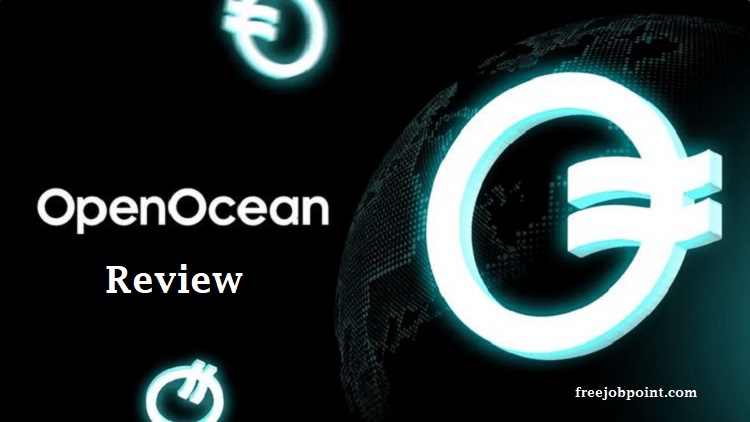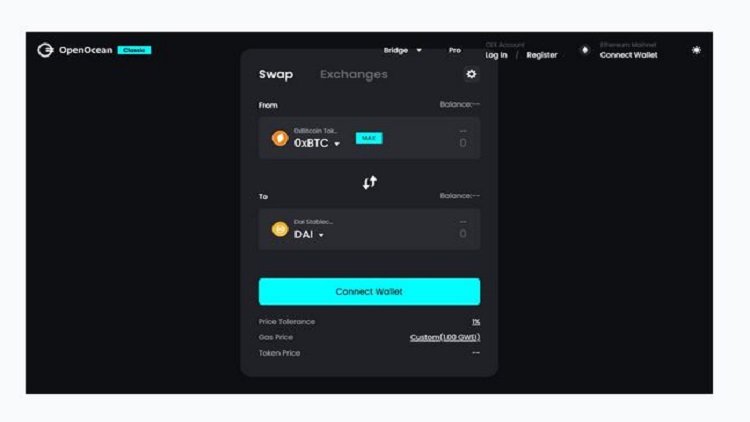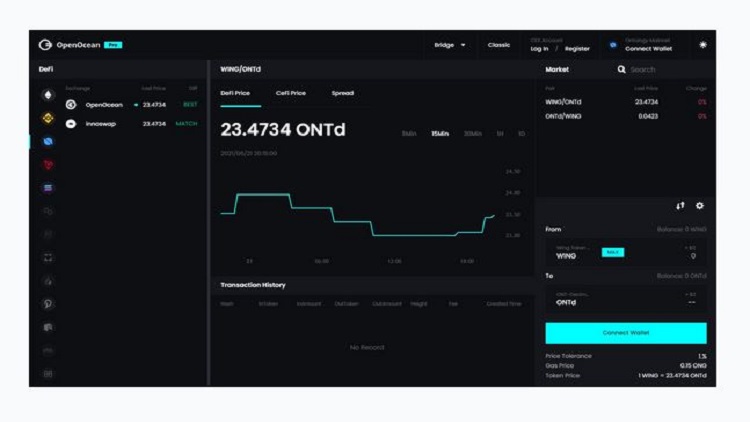In this guide, we will do an OpenOcean exchange review, and discuss its key features, it’s interface, fee structure, and wallets of OpenOcean Exchange.

Contents
Overview
OpenOcean collects funds from many of the World Wide Web platforms to allow easy purchases. The exchange operates on multiple platforms, including Ethereum and BNB Chain. Later, researchers hope to include it in Polkadot or Solana.
This offers both traditional and internet marketplaces, which lets you trade more profitably and with less error.
| OpenOcean | Overview |
|---|---|
| Official Website | https://openocean.finance/ |
| Token Name | OpenOcean Token |
| Ticker | OOE |
| Token Type | Utility and Governance |
| Blockchain | Ethereum , BSC, Polygon, Avalanche |
| Token Standard | ERC20, BEP20, ARC20, PRC20 |
Key Features
These are the key features of OpenOcean.
1. Option Trading
Trading on DEXs and CEXs allows users to change their interface for easy viewing of important details.
To support traders in trading, it delivers tools like candlestick charts and limit orders. In addition, you can use custom interfaces for your trading methods through APIs, set reminders, monitor your profits and losses, and get updates in real-time.
Regular people can buy and sell conventional and derivative assets easily and with fewer errors by using a simple interface.
2. Improved Liquidity
Using OpenOcean, you may trade more quickly and with more possibilities because it pools funds from top DEXes and CEXes. It works with popular wallets. You can handle all of your trading on any CEX in one spot with OpenOcean’s wallet and portfolio margin pool.
Companies get you the best deals and minimize trading fees by using intelligent technology and machine learning. Additionally, they efficiently transfer money between multiple systems by employing an individual technique known as the Dijkstra Algorithm (D-star).
3. Arbitrage
Profits from cryptocurrency arbitrage are buying a cryptocurrency at a discount on one exchange and selling it at higher prices on another.
You can benefit from the price differences between different cryptocurrency exchanges because they can vary widely. The difference between what you pay and what you receive when you sell it is your profit.
Interface of OpenOcean Exchange
There is a trading interface on every trading platform. You can view the price chart and current market price of a particular cryptocurrency in this section of the exchange’s website.
Usually, there are also buy-and-sell cryptocurrency options with order entry available. The order history, which displays previous transactions, is another feature that many platforms offer.
There are two interface types available in OpenOcean Exchange: Classic and Pro.
1. OpenOcean Classic

The main purpose of this user-friendly software is trading on decentralized exchanges (DEXes). In comparison with OpenOcean Pro, it has a wider selection of token pairings.
2. OpenOcean Pro

OpenOcean Pro is a skilled trading and arbitrage platform. It provides charts for investigation. Furthermore, they want to offer insurance, financing, and derivative products in the future.
Fees Structure
OpenOcean Trading Fees
There are maker fees for people who place orders and taker fees for those who accept existing orders in centralized exchanges. Using flat rates, where each person pays the same amount, is one option.
One of the main reasons users prefer decentralized exchanges over centralized ones is no charge of trading fees.
According to OpenOcean Exchange, its expenses are clear. Route-finding is free for Defi Users. Using particular user interfaces, a SAAS feature, arbitrage trades, margin products, and wealth management services, the fees come from large investors.
Since the exact rate is unavailable, users are unable to compare their fees with averages.
OpenOcean Withdrawal Fees
Along with the network fees, OpenOcean does not appear to charge any fees associated with withdrawals or transfers, unlike many decentralized exchanges.
Network fees are not charged from the exchange; in fact, they are payments made to the mining of the relevant cryptocurrency or blockchain. According to network demand, these network prices may change.
After taking into account all exchanges, including both centralized and decentralized exchanges (CEXs) in the dataset, having to pay simply network costs is generally thought to be lower than the worldwide industry average for crypto withdrawal fees.
Wallets of OpenOcean Exchange
Supported Wallets by OpenOcean Exchange
| BSC Wallet | BSC Wallet, Mathwallet, SafePal, BitKeep, TokenPocket, ONTO, MetaMask, Trustwallet, WalletConnect |
| ONT Wallet | ONTO, Cyano |
| ETH Wallet | MetaMask, ONTO, Trustwallet, SafePal, TokenPocket, ImToken, BitKeep, Mathwallet, WalletConnect |
| TRON Wallet | TronLink |
| Solana Wallet | Sollet |
FAQs
OpenOcean is a DEX provider that provides users with a one-stop shopping experience by combining the best liquidity sources from many blockchains into a single, user-friendly trading interface.
OpenOcean Exchange is a multi-chain exchange that functions both centrally and decentrally.
By connecting liquidity from many decentralized and controlled exchanges, OpenOcean gives customers access to lower slippage points and competitive transaction prices.
In the assets tab, tap or click the “Swap” icon; from there, choose OpenOcean under “Choose asset.” Enter the amount of Ethereum that you wish to trade for OpenOcean. Remember to include it in transaction fees.
Final Words
All users can benefit from the OpenOcean aggregator, which has many Bitcoin markets. It supports 13 wallets and functions with four different blockchains.
It supports users in quickly and effectively exchanging tokens to obtain the best offers at the low cost of gas. Users simply need to pay ordinary blockchain and exchange costs in order to use the aggregator system, which is free to use.
With all of its potential benefits, OpenOcean is going to continue to grow rapidly. We hope that this article of OpenOcean Review will help you gain a better knowledge of the project.